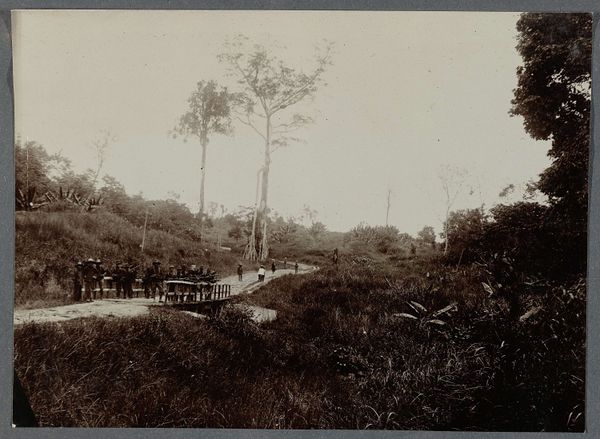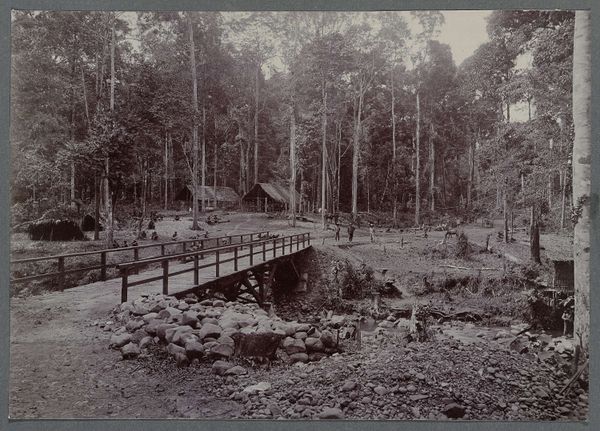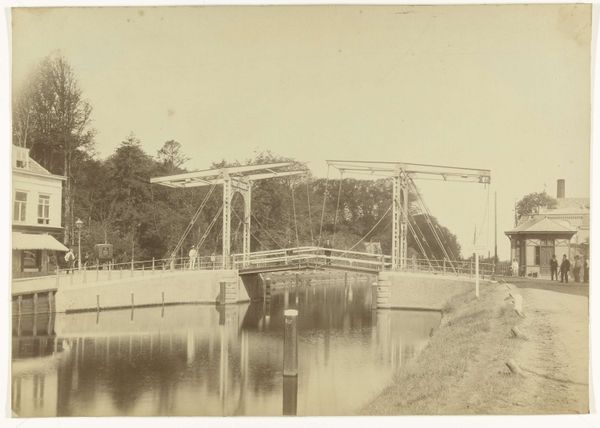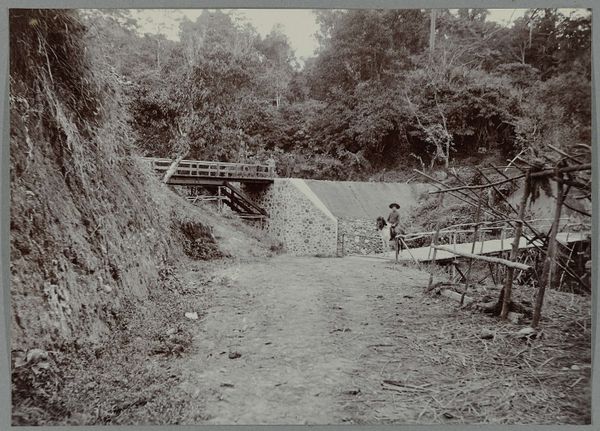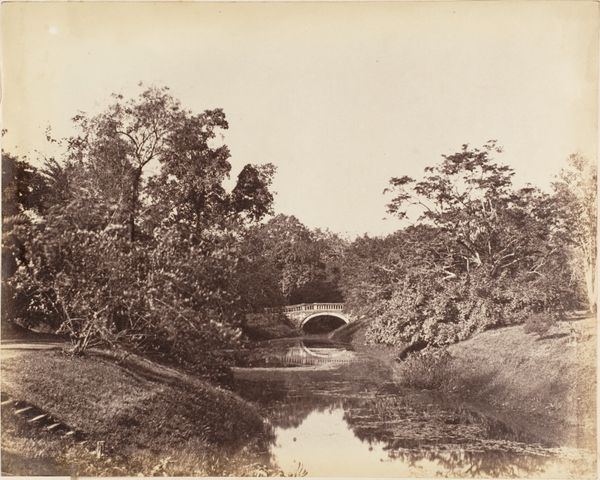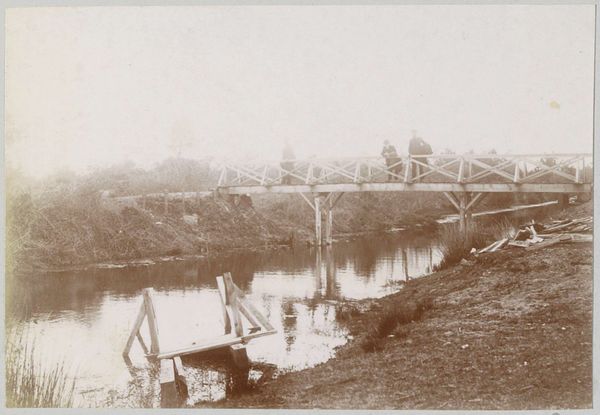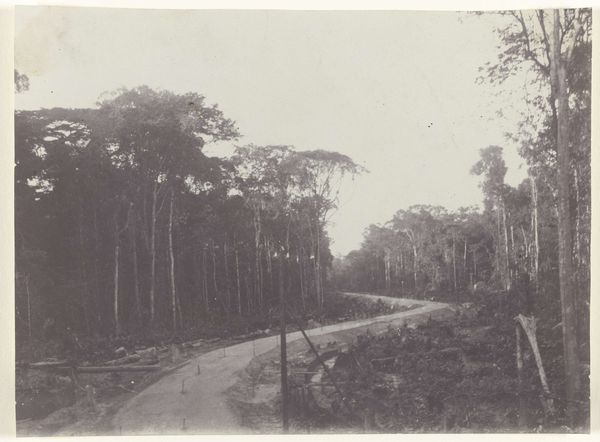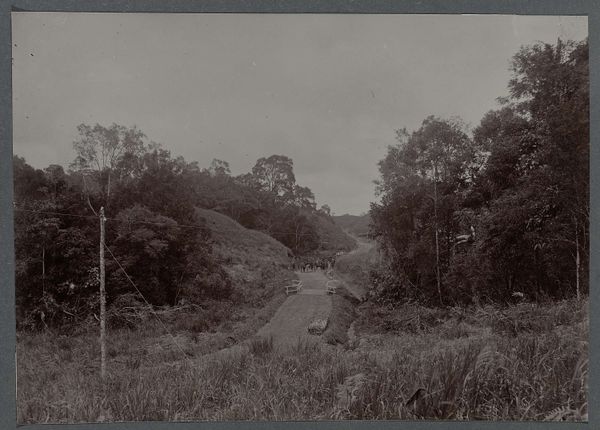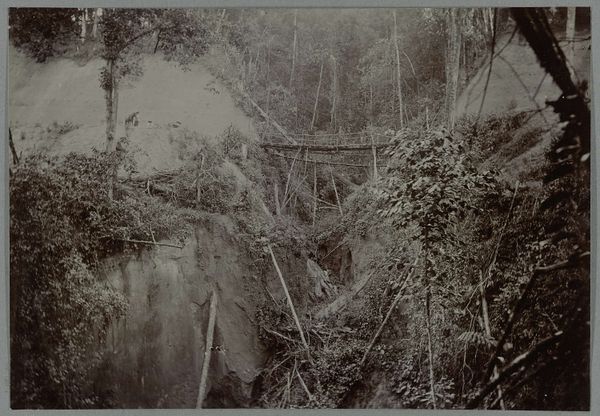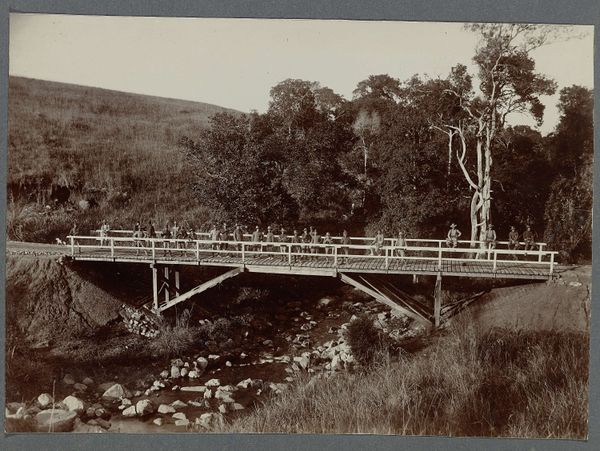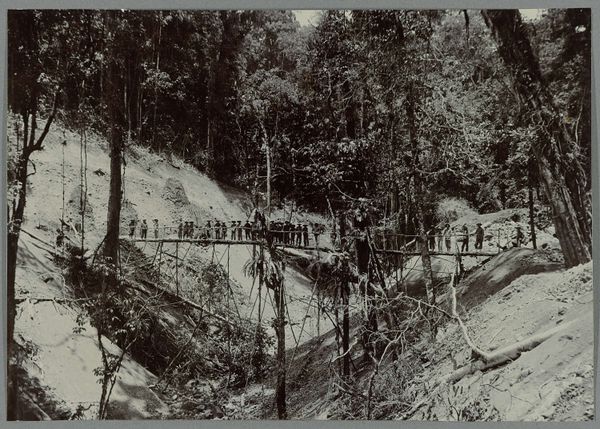
photography
#
muted colour palette
#
abandoned
#
photo restoration
#
landscape
#
photography
#
muted colour
#
mixed media
Dimensions: height 138 mm, width 200 mm
Copyright: Rijks Museum: Open Domain
Curator: Let's discuss this rather unassuming image, titled "Brug over de rivier Alue Teungoh," taken sometime between 1903 and 1913. Editor: Well, "unassuming" is one word for it. My first impression is, wow, that is a very damp-looking bridge! A bit gloomy, really, like a memory half-forgotten. I am immediately wondering about the types of wood and the labour it took to put it up. Curator: Indeed! It's a photograph that prompts reflection, doesn’t it? Notice the contrast. You've got this sturdy bridge, likely made with local materials, cutting right through a very untamed, perhaps even impenetrable looking jungle. And there appear to be people on the bridge in a variety of garb. Editor: Absolutely, look at the beams, they're almost rudimentary in their construction. You can almost feel the effort, and what of the workforce involved? Colonial contexts like these raise unavoidable questions of who was commissioned and who did the hard labour. Curator: Precisely! The materiality is fundamental here, speaking volumes about colonial engineering and its relationship with the landscape. Beyond its practical function, does it not also embody an idea of "progress", forging ahead regardless? To me, it's almost mournful, though... Editor: Yes, you sense the latent, slow violence imbued within this image: the felling of trees, resource extraction, forced labor... it's all kind of muted by the passage of time and monochrome but no less potent! But progress for whom exactly? It has left some lovely wood to cut, at least for some logs laying in the foreground! Curator: A pertinent question and quite elegantly framed. Perhaps we're seeing the beginnings of a larger narrative, then – a testament to change, yes, but also a whisper of what was inevitably lost. The romance of the shot combined with the crude elements offer such contrasts for the viewer. Editor: It certainly gets you thinking. The mundane, daily impact that infrastructural interventions had on specific ecologies but especially for colonized populations. It is always there, no matter how innocuous. So yes, I do appreciate a more thorough look!
Comments
No comments
Be the first to comment and join the conversation on the ultimate creative platform.

